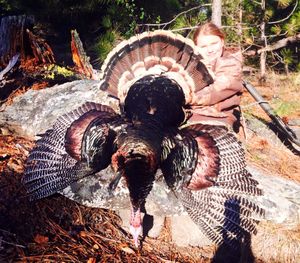2015 hunter reports due in Washington, Idaho
HUNTING -- To avoid penalties next time they try to buy a Washington or Idaho hunting license, sportsmen must report their 2015 hunting activity for big-game and turkey. The information is compiled to help wildlife manager see trends in game populations and hunter activity. The states have easy online reporting web pages.
WASHINGTON requires all hunters to report via a link on the Department of Fish and Wildlife hunting web page for each big game or turkey transport tag and special hunting permit acquired for the previous hunting season by Jan. 31. Hunters who do not meet the deadline are subject to a $10 penalty, which must be paid before a license for the next season can be purchased.
Hunters with special permits for seasons that extend past Jan. 31 should report hunting activity for that permit within 10 days of the close of the season. The report covers your activity during the general hunting season, plus special permits.
The report asks for the game management units hunted and how many days hunted.
Hunters are also required to submit information from all migratory bird harvest record cards acquired for the previous season, regardless of hunting success. Reports must be received by Sept. 30 for band-tailed pigeons and by Feb. 15 for brant, sea ducks, and snow geese. Hunters not reporting by these dates will receive a $10 penalty which must be paid before any new migratory bird authorization and harvest record card for the next season can be purchased.
IDAHO hunter reporting is required either 10 days after a deer, elk or pronghorn is harvested, or 10 days following the end of the season for which a tag is valid. Hunters are required to file a report for each tag they purchased whether they went hunting or not.
Reports can be filed online at or call (877) 268-9365 and speak to a live operator 24 hours a day, seven days a week.
To file reports, hunters need to know their tag numbers or hunting license numbers, the number of days they hunted, the game management units they hunted in, the date they harvested, and the number of antler points on the animal they harvested, or the length of the horns for pronghorns in inches.
Promptly received hunting and harvest data provides Fish and Game a more complete picture of game populations to base decisions for next year's season. Without this timely information, managers are forced to be more conservative when making future hunting opportunities available. In addition, hunters like having harvest estimates well before the application period for fall controlled hunts. If Fish and Game receives hunter reports early, wildlife managers are able to complete the harvest estimates sooner so hunters can plan their hunting trips next fall.

